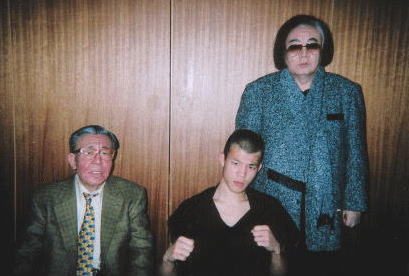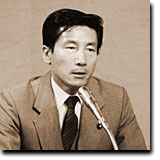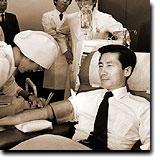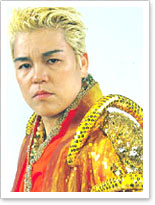
Japan Times reports on Takenaka’s announcement, which came at a post-cabinet meeting press conference:
Internal Affairs and Communications Minister Heizo Takenaka said Friday he will retire from politics when outgoing Prime Minister Junichiro Koizumi steps down Sept. 26.
Takenaka, a 55-year-old professor-turned-lawmaker, said he decided to quit politics because his job had been to assist Koizumi’s economic reforms.
But what I didn’t see reported in English was news of who will take Takenaka’s proportional representation seat in the Diet. You see, members of the upper house who were elected by PR don’t represent a specific district, so there’s no runoff to replace people who quit or die. Whatever party the person leaving belonged to gets to select the replacement.
In this case the LDP had a Ms. Shinobu Kandori at the top of their waiting list from when she ran in 2004. Kandori (41) is a former Judo star who went on to become a veteran and former CEO of Japan’s Lady’s Legend Pro Wrestling. Sometimes knows as “the strongest man in ladies’ wrestling”, her accomplishments in the ring include the distinction of being among the few female wrestlers to defeat a male wrestler (eat your heart out Andy Kaufman!) in an effort to break down the barriers between men’s and ladies’ wrestling. She was also a participant in the first-ever women’s version of anything-goes kickboxing called L-1. Outside the ring, she made waves by becoming the first female freelance pro wrestler, choosing to negotiate matches from outside the company. Her profile on her agent’s website lists her main hobby as gambling.
A Jan 2002 interview places Kandori’s legendary 1986 wrestling debut against Jackie Sato as the event that destroyed the image of female wrestlers as objects of adoration (“idols”) (Ed: corrected translation). Known for her brutality in the squared circle, Kandori specializes in chain deathmatches and no-holds-barred fights. Her theme song is “All We Are” by female-led hair metal band Warlock (watch and listen here on Youtube!). She considers herself a pioneer for women in wrestling, which her record no doubt backs up. Few before her in ladies wrestling had the muscular body of a Judo champ, which allowed her to try some new things like fighting men. Her goal as a leader of ladies wrestling was to make the sport more organized and to raise standards of who can become a wrestler.
But now she’s got some big shoes to fill. Her official blog doesn’t have much on it yet since the announcement just came out yesterday, but I wouldn’t count on seeing any more pictures of her chugging tomato juice from now on:

In case you were wondering what she’ll be bringing to her new job as a public servant, Wikipedia has an indication: Her unsuccessful political campaign in 2004 earned her criticism after she bluntly stated that she “honestly, like, [doesn’t] get this Iraq issue.” She also reportedly never made her mandatory social security payments, claiming that as a pro wrestler she never learned how to live in normal society. “The system is just too hard to understand,” she explained. “We have to change it.”
Thing is, the LDP actually sought Kandori out to exploit her fame (much like they tried to do with Horie), so in part she can’t be blamed for making such inappropriate comments. She’s just being honest, and if that’s good enough for the LDP, then it’s up to the voters to decide whether she deserves a Diet seat, right? Well, sort of. They voted her out, but now she’s back in on a technicality.
But just in case you thought Ms. Kandori lacked ideas, take a look at this brilliant campaign tactic from 2004:
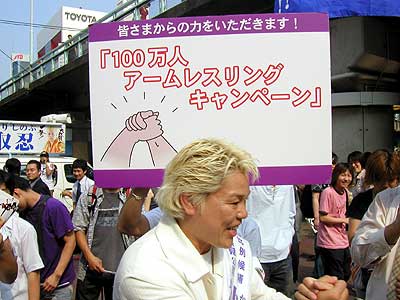
Translation: “Lend me your strength! It’s the million-person arm wrestling campaign”
Yes, the woman who once destroyed the door of Korakuen Hall’s green room in a fit of anger will join the ranks of Atsushi Onita (profiled before on this blog and whose official Diet secretary got in trouble earlier this year for kicking a rival wrestler in the face… and he apparently has beef with 26-yo Taizo Sugimura, another LDP Diet member of questionable merit) and the legendary Antonio Inoki.
Something tells me she won’t be offered any of Takenaka’s cabinet posts, but she might make a more pretty good Gender Equality minister.
UPDATE: Her other nickname is “Mr. Ladies’ Wrestling.” See that fact and a sweet action pose here.

